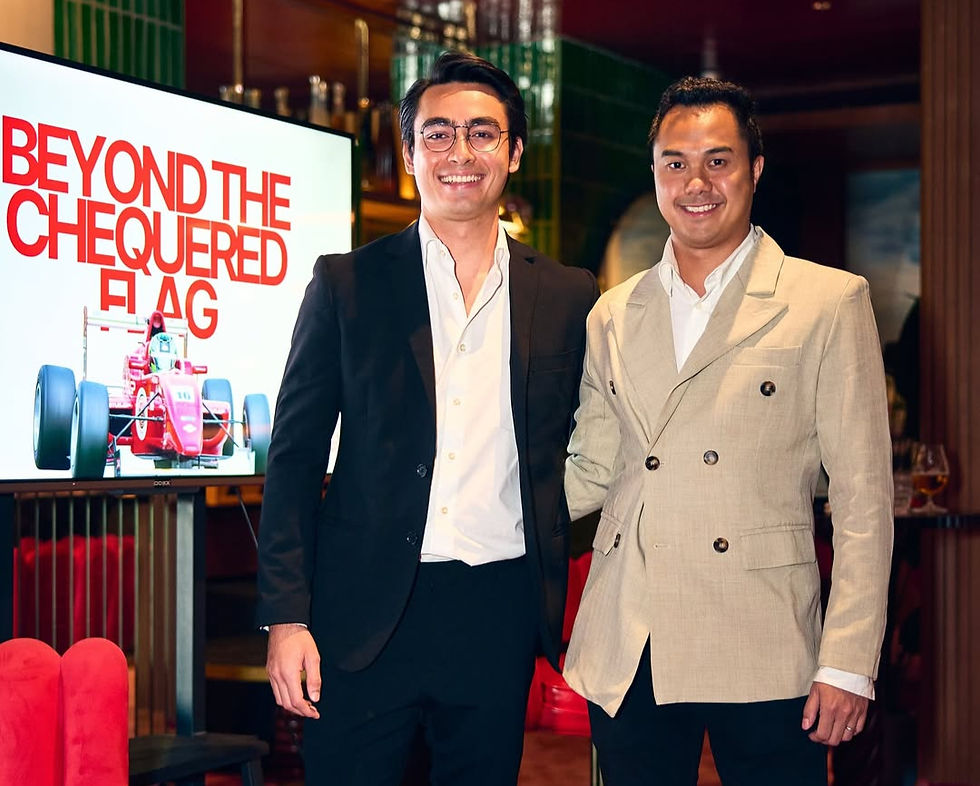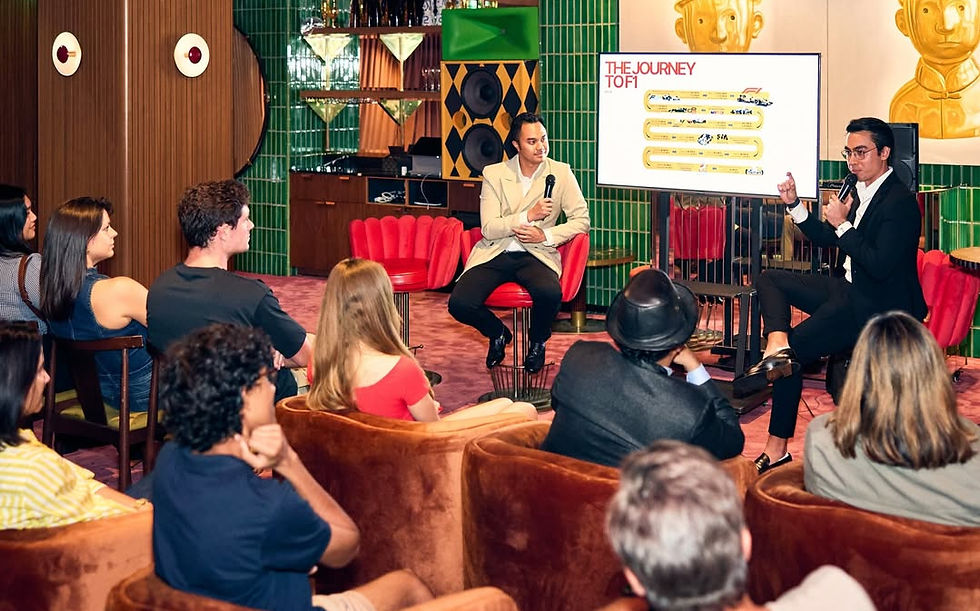Beyond the Chequered Flag: Inside Asia’s Pursuit of Motorsport Greatness
- FLEX Media Team

- Sep 28
- 2 min read
As Singapore gears up for its most glamorous week of the year — the Formula 1 Grand Prix — Mandala Club opened its doors to a different kind of race. On Wednesday night, members gathered in The Velvet Room for Beyond the Chequered Flag, a rare behind-the-scenes conversation with two of Asia’s most accomplished motorsport figures: Jazeman Jaafar, former Mercedes-AMG PETRONAS F1 development driver, and Daniel Woodroof, ex-Formula Masters driver and TV host.
Moderated in true Mandala style — intimate, insightful, and unscripted — the evening pulled back the curtain on what it truly takes to make it in motorsport, a discipline that demands not just skill, but resilience, discipline, and obsession.

The Path to Formula 1: Starting at Four
Both drivers agreed that Asia’s motorsport culture is evolving — but it’s also fiercely competitive. In Japan, for instance, children begin karting as early as four years old, with parents investing heavily to help them reach the elite racing circuits. “By the time they’re teenagers, they already have over a decade of track experience,” one speaker noted. “That’s the kind of early start it takes to get into Formula 1.”
While Malaysia and Singapore continue to nurture talent through regional programs and private academies, Asia’s drivers still face steep challenges in sponsorship, logistics, and the cost of competing at the international level.
The Singapore Circuit: Beauty, Danger, and Endurance
The discussion turned naturally to Singapore’s Marina Bay Street Circuit — widely known as one of the toughest and most dangerous on the F1 calendar.
Unlike wide European tracks, Singapore’s urban circuit leaves no margin for error. “It’s narrow, surrounded by concrete walls, and the humidity is brutal,” said Jaafar. “You can’t ‘race each other’ in the traditional sense — it’s about precision and survival.”
Drivers endure temperatures exceeding 60°C in the cockpit, forcing them to train under sauna-like conditions in the gym just to adapt. “It’s like driving a marathon in a furnace,” added Woodroof. “You have to be both an athlete and a strategist.”

Racing Meets Society
Yet beyond the track, both speakers praised Singapore’s mastery of F1 commercialisation. The city-state has transformed its night race into a global cultural phenomenon, seamlessly blending motorsport with music, hospitality, and society.
From world-class concerts and luxury brand activations to private afterparties at clubs like Mandala itself, the Singapore Grand Prix has evolved into Asia’s Monaco — where engines, champagne, and conversation mix under the city’s illuminated skyline.
More Than a Sport
What emerged from the discussion was clear: motorsport in Asia is no longer a niche pursuit. It’s a growing ecosystem of talent, business, and entertainment — one that reflects the region’s ambition, wealth, and appetite for excellence.
As one attendee remarked, “Motorsport is the perfect metaphor for Asia right now — high-speed, high-stakes, and impossible to ignore.”







